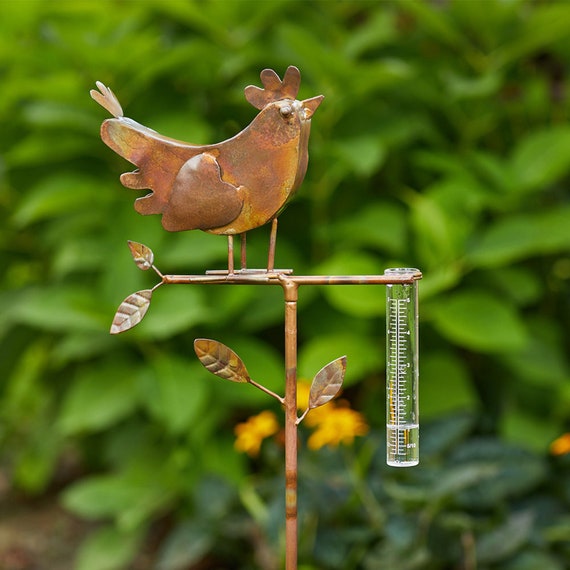Introducing the Science Behind Rain Determines: How These Gadgets Play an Essential Role in Climate Research Study and Environmental Tracking
Rain assesses, apparently simple devices, hold an extensive relevance in the realm of climate study and environmental monitoring. As we peel off back the layers of this clinical shroud surrounding rainfall determines, we reveal a globe where accuracy, information precision, and careful monitoring converge to reveal a much deeper understanding of our changing environment and its influence on the planet.
Relevance of Rainfall Scales
Rainfall determines play an important role in surveillance and measuring rainfall degrees, providing important data for environment research and analysis. These gadgets are essential in evaluating the quantity of rainfall that occurs in a particular location over a certain period. By gathering and determining rainwater, rain evaluates deal useful insights right into the distribution and intensity of precipitation, aiding meteorologists, hydrologists, and climatologists in recognizing weather condition patterns and fads.
In addition, long-lasting data accumulated from rainfall determines aids in examining environment modification effects and patterns, adding dramatically to scientific research and decision-making processes. In essence, rainfall gauges serve as important tools in the field of meteorology and environmental science, playing a crucial role in advancing our understanding of weather condition and climate dynamics.
Kinds Of Rain Gauges

Performance and Operation
In the world of environment research study and atmospheric research studies, the effectiveness of rainfall gauges lies in their intricate capability and accurate functional systems. Rainfall gauges are made to precisely gauge the amount of rainfall that falls over a details area throughout a collection period.
The performance of rain assesses is based upon the principle of determining and gathering rain in a standardized fashion. This collected data is vital for comprehending local weather condition patterns, tracking lasting climate patterns, and analyzing environmental influences. To ensure precise dimensions, rain determines requirement to be tactically positioned in open areas far from blockages such as buildings or trees that could hinder the collection procedure.
The functional element of rainfall gauges includes routine upkeep to stop debris accumulation, calibration checks to maintain measurement accuracy, and data tape-recording for evaluation (rain gauge). Generally, the capability and procedure of rainfall gauges are crucial for gathering trusted rainfall information vital to climate research and environmental tracking
Function in Climate Research
Given the critical significance of accurate precipitation dimensions in recognizing weather patterns and ecological influences, learn the facts here now the duty of rainfall assesses in climate research study is vital. Rain gauges supply essential data for climate research by quantifying the amount of rainfall that tips over a particular area during an offered duration. This information is vital for keeping track of long-term fads in rainfall patterns, examining the impact of climate change on rainfall circulation, and improving environment models.

Environment scientists make use of information gathered from rain determines to examine variations in rainfall levels, recognize regional environment patterns, and review the efficiency of water source monitoring techniques. By comparing historical rainfall data with present measurements, scientists can detect changes in rainfall patterns, such as changes in the regularity or intensity of rains events. This info is image source vital for comprehending how environment modification is affecting rainfall dynamics and can assist policymakers make educated decisions relating to adaptation and mitigation approaches.
Applications in Environmental Surveillance

In flooding forecasting, rainfall gauge data assists to track rains strength and distribution, allowing authorities to provide prompt cautions and take required procedures to minimize flooding threats (rain gauge). Dry spell tracking relies on rainfall scale data to analyze dampness levels in the soil and track rainfall shortages, aiding in the recognition of drought-prone areas and the implementation of dry spell action methods
Additionally, rainfall gauge data plays an important duty in water resource administration by giving information on water accessibility and use patterns. In addition, in agriculture, rain gauge information aids farmers in maximizing watering schedules, crop choice, and total ranch management practices based on regional rainfall patterns.
Verdict
In verdict, rainfall determines informative post are essential tools for measuring precipitation, providing valuable data for environment study and ecological tracking. With different types and performances, rain evaluates play a critical role in understanding rainfall patterns and their effect on the setting. By precisely gauging rains, these gadgets contribute to the improvement of scientific knowledge and aid in making informed decisions associated to water resource management and calamity readiness.
Rain evaluates play a crucial function in monitoring and measuring rainfall levels, giving necessary information for climate study and analysis. The basic rainfall gauge, understood as the "tipping container" scale, is one of the most frequently utilized tools. Ultrasonic rainfall gauges usage noise waves to spot the existence of rainfall, supplying real-time data on rainfall degrees.Climate scientists use information collected from rainfall evaluates to analyze variants in precipitation levels, recognize regional environment trends, and examine the effectiveness of water source management approaches.In conclusion, rainfall gauges are crucial tools for gauging precipitation, supplying valuable data for climate research study and ecological tracking.